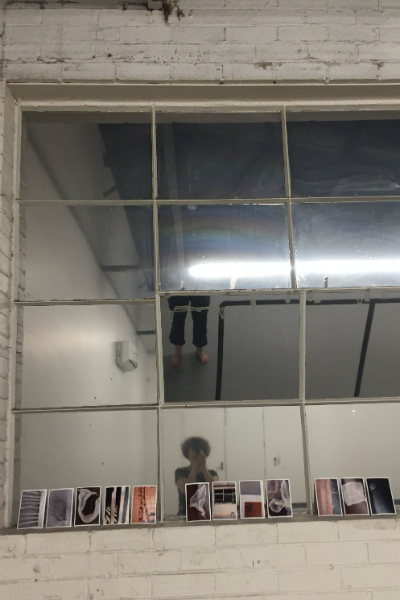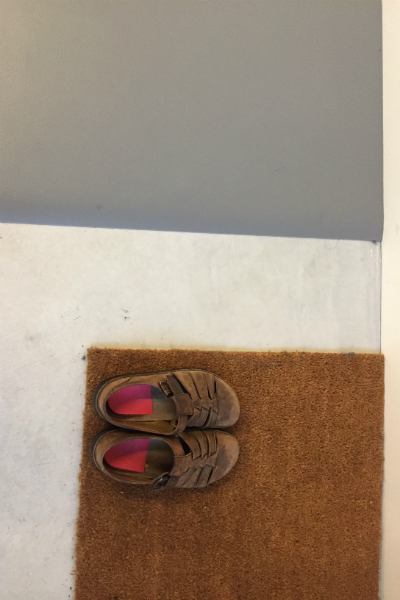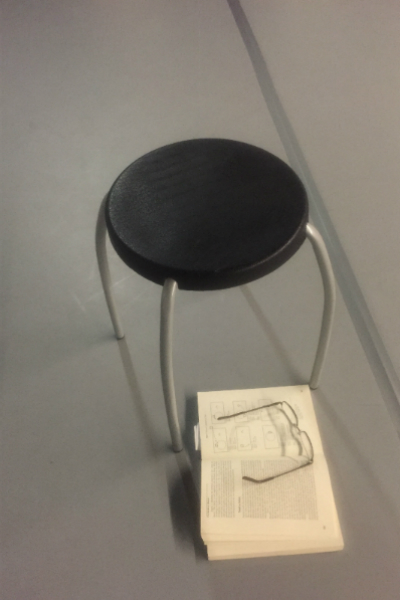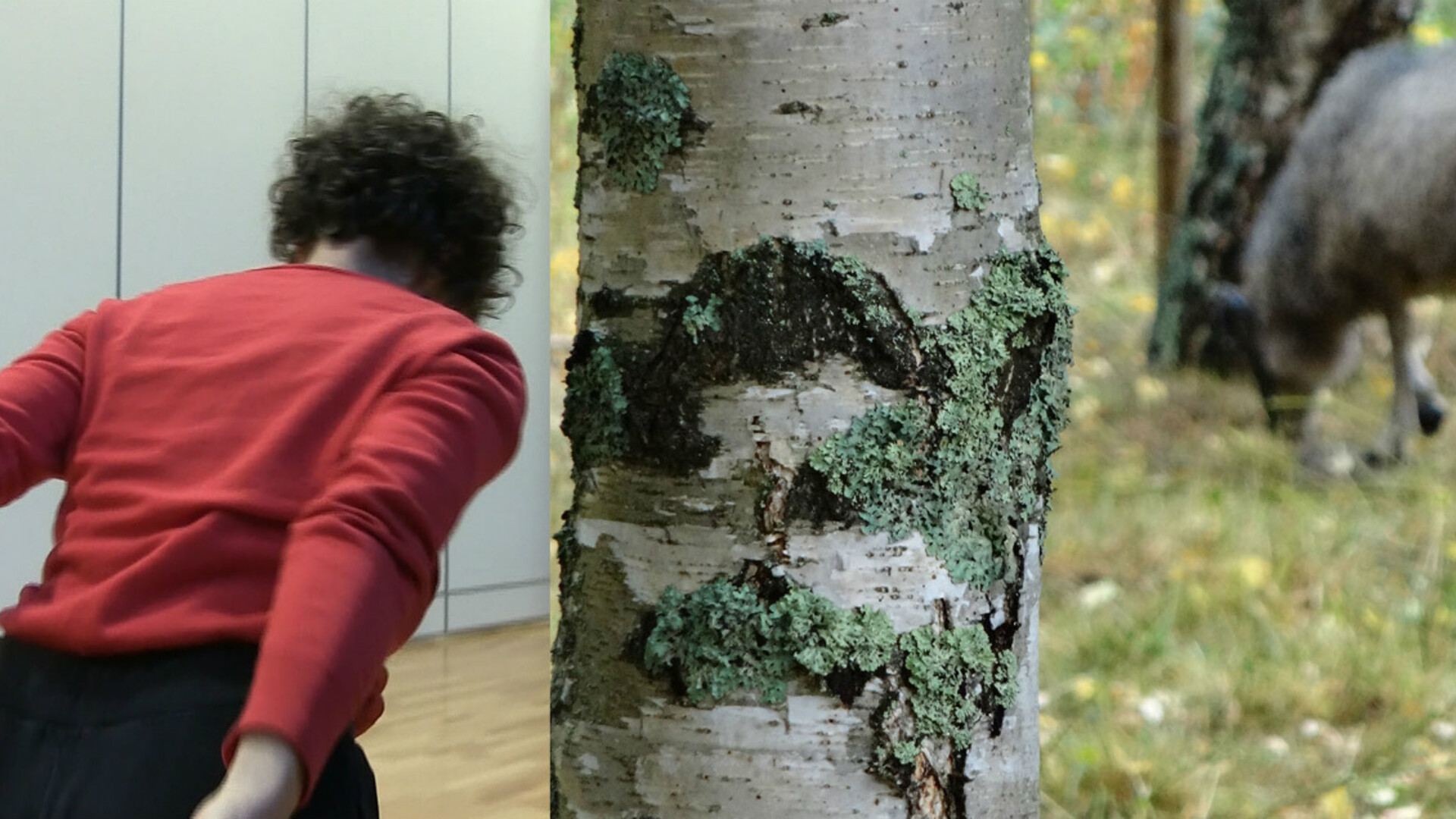About Sally’s Residency
This LGI Residency is part of an ongoing research into movement compositional ideas derived from the approach invented by the late Israeli artist, Noa Eshkol.
Here’s what Sally said of the project on the eve of the residency:
“I’ve been involved in modern dance for decades. I’m interested in dance history as a source for contemporary practices.
In particular I’m exploring some ideas that have come from research I’ve undertaken into the work of the late Israeli artist Noa Eshkol. She developed a compositional notation system (EWMN).
The photo is one of a series of composites where I have used my personal archive of snap shots taken in various international locations during my dancing life. In putting images together I look for a movement passing from one side to another.
Michelle Mantsio and Kate Kennedy will be joining me on an occasional basis.”
Learn more about Noa Eshkol:
– Biography
– Eshkol-Wachmann Movement Notation
– The Noa Eshkol Archive

Notes from the studio
“I am enjoying spending the time in the studio spaces.
I’ve been taking photos of details.
I am trying to reconstruct Steve Paxton’s Flat from a detailed description of the work by Sally Banes in Writing Dancing in the Age of Postmodernism [Wesleyan UP, 1994]. It involves walking and standing, posing, and taking off and on items of clothing and numerous other challenges.

Kate Kennedy and Michaela Ottone are joining me in this, although Flat is or was a solo. Paxton saw Noa Eshkol’s work when she was touring American college campuses in 1970. He wrote: ‘It was just great luck to happen to see her work. It reorganised my brain, I’m sure, and from then on dance could thought of in her terms: unique, formal, perfect, and indifferent to applause…’ [‘Thoughts on Noa’, in Sharon Lockhart Noa Eshkol Sternberg Press, 2012]”

Post-Residency Reflections
On 21st June, to complete a residency at LGI WXYZ studios, with co-performers Michaela Ottone and Kate Kennedy, I presented an arrangement of Steve Paxton’s piece Flat (1964), based on the description by Sally Banes (in Writing Dancing in the Age of Postmodernism, 1994), followed by some movement patterns composed using principles of Eshkol Wachmann movement notation (see Eshkol, N. & Wachmann A. Movement Notation, 1958). The performance of our version(s) of Flat could have been considered to mark the 80th birthday of Paxton as he was born in 1939 (Wikipedia).
The performance also recognised that in 1970 (some years after he had composed Flat), Paxton had seen work by Palestinian-born artist, Noa Eshkol (b.1924) and claimed that it had ‘reorganized my brain’ (‘Thoughts on Noa’ in Sharon Lockhart/Noa Eshkol Sternberg Press, 2012). Noa Eshkol is not as well known in the dance field as Paxton, whom a reviewer once described as ‘the heartthrob of the postmodern dance world’ (Sagolla, L. Review in Back Stage, 40/24, 1999). Eshkol worked mainly in Israel and more particularly at her house and studio in Holon near Tel Aviv. Her work, which also includes a large number of ‘wall carpets’, and that of the dancers who maintain her oeuvre, has become internationally visible more recently through the exhibition Sharon Lockhart/Noa Eshkol which toured Europe and the US in 2012-13. I spent about 10 days visiting the Holon house and studio in January 2016, where I experienced the hospitality and commitment of the Chamber Dance Group.
This end-of-residency event gave me a lot to think about. I had anticipated the showing as a kind of dance history seminar - in a program for the evening I provided a set of key dates; a review of Flat from 1980 (Sagolla 1999); and Paxton’s ‘Thoughts on Noa’ (in Sharon Lockhart/Noa Eshkol, Sternberg Press 2012) - and imagined the people attending (friends and family) as research colleagues or post-graduates. I imagined we would engage in a discussion. I forgot that a live dance performance is to some extent seen and/or experienced as a ‘one off’ rather than as part of an ongoing, interconnected field of investigation.
During the residency I had tried to find a way through the number of different perspectives from which the event of a dance can be considered – such as the perspectives of: modern and post-modern dance histories, dance re-construction, issues of copyright and documentation, dance composition or choreography, performance, the phenomenology of dancing, corporeality, gender, style, ecologies of dance-making and performance, architecture, the experience of time, (auto)biography, ageing, gut reaction, the nature of ‘residency’. I thought any of these were valid and implicit frameworks for thinking about this presentation but I didn’t feel compelled by any of them, at least not in isolation.
My main feeling was that practising or working away at something is one meaningful activity, performing for an audience, another. The audience’s audiencing is another meaningful activity. Taken together with all of their conditions, they make up a specific way of life.
Sally Gardner, July 2019
About Sally Gardner
“My dance formation took place in London and NYC.
I studied key styles and with seminal choreographers of modern and post-modern dance. I danced with Dancework (UK); Robert Kovich, Judith Moss, Sara and Jerry Pearson (NYC); was a founding member of Dance Works (Melbourne) and have been guest performer with Dance Exchange (Sydney) and Lucy Guerin Inc. I have independently received Australia Council funding.
I was a lecturer in dance, Deakin University, 2005–2017.”
About LGI Residencies
LGI Residencies offer artists the freedom to explore new ideas, develop new works and cultivate their choreographic practice. Studio space and administrative support are offered by LGI, as well as the opportunity to share outcomes of the residency in a way that best supports the artist in residence.
Out of Time residencies take place during evenings and weekends. This format offers choreographers more flexibility in their schedule as well as optimising the use of these stunning studio spaces.
For more information on LGI’s residency program and the other 2019 Artists-in-Residence, please visit the Residency tab on our Programs page. Each will also have a blog post, offering an insight into their projects as they progress - find these on our About page under News.
Get updates on all LGI’s artists-in-residence in your inbox monthly by signing up for the LGI enews, or keep an eye on LGI’s Facebook and Instagram.
